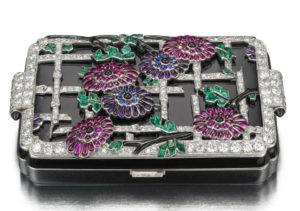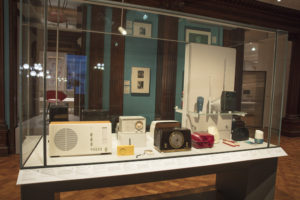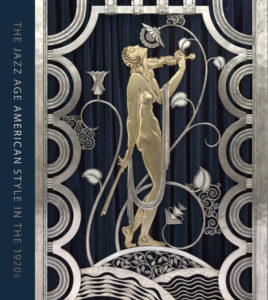The Jazz Age: American Style in the 1920s


“A multisensory blockbuster of a show…” —Associated Press
The first major museum exhibition to focus on American taste during the creative explosion of the 1920s, The Jazz Age is a multi-media experience of more than 400 examples of interior design, industrial design, decorative art, jewelry, fashion, and architecture, as well as related music and film. Giving full expression to the decade’s diversity and dynamism, The Jazz Age defines the American spirit of the period.
During the 1920s, the influences that fueled design’s burst of innovation, exoticism, and modernity were manifold and flowed back and forth across the Atlantic. Jazz music, a uniquely American art form, also found a ready audience in Europe. An apt metaphor for the decade’s embrace of urbanity and experimentation, jazz captured the pulse and rich mixture of cultures and rhythms that brought a new beat to contemporary life.
Organized into the themes of Persistence of Traditional “Good Taste,” A New Look for Familiar Forms, Bending the Rules, A Smaller World, Abstraction and Reinvention, and Toward a Machine Age and presented on two floors of the museum, The Jazz Age highlights the dynamic changes in American taste and lifestyles that prompted an outpouring of design and heralded an exhilarating new era.
The Jazz Age: American Style in the 1920s is co-organized by Cooper Hewitt, Smithsonian Design Museum and the Cleveland Museum of Art.
#JazzAgeAmerica

On view through August 27, 2017.
A focused installation of art deco luxury objects will be on view in the museum’s Teak Room and will feature more than 100 extraordinary design objects, including cigarette cases, compacts, timepieces, and vanity cases, created by Europe and America’s premier jewelry houses. Find out more.

On view through September 24, 2017.
The World of Radio, a Depression-era, monumental batik mural, is the centerpiece of this installation of iconic radios, radio design drawings, and photographs from the early twentieth century through the present day. Find out more.

Take home the exhibition’s sumptuous catalog featuring hundreds of full-color illustrations and essays by the exhibition curators. Available at SHOP Cooper Hewitt.
The Jazz Age: American Style in the 1920s is made possible by the generous support of Madeleine K. Rudin and Grant S. Johnson in memory of Jack Rudin.
Additional major support is provided by Amita and Purnendu Chatterjee, Robert and Helen Appel, Helen and Edward Hintz, and the Secretary of the Smithsonian and the Smithsonian National Board. Funding is also provided by the August Heckscher Exhibition Fund, The Masinter Family Foundation, Shelby and Frederick Gans, Nion McEvoy, Marlene Nathan Meyerson Family Foundation, Ehrenkranz Fund, Esme Usdan Exhibition Endowment Fund, Siegelson, New York, Cooper Hewitt Master’s Program Fund, Karen and Joe Levine, and The Felicia Fund.
Featured image: Photo by Matt Flynn © 2017 Cooper Hewitt, Smithsonian Design Museum